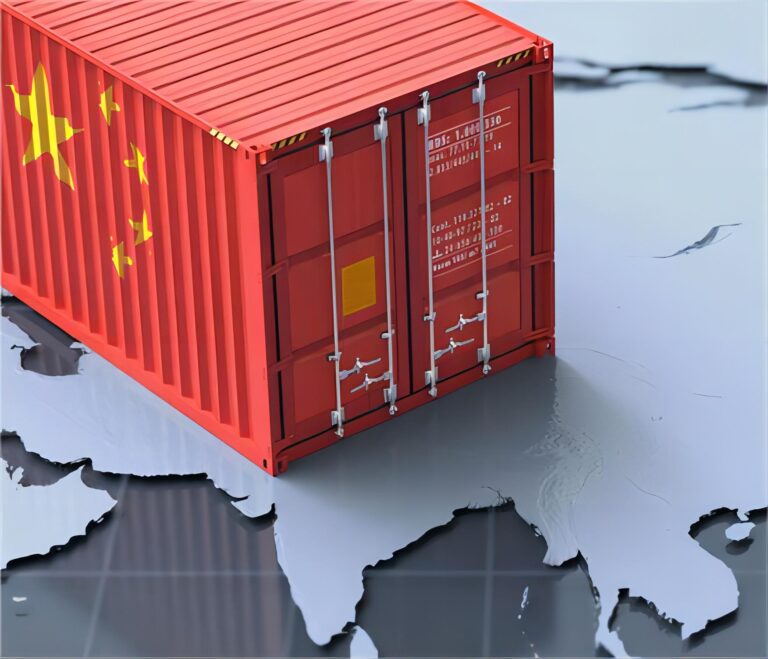- By TOP CHINA FREIGHT
- February 19, 2025
- News
The Current Situation and Improvement of China's Freight Transport
In recent years, China has established itself as a global leader in trade and logistics, becoming a critical hub for freight transportation. As the world’s largest exporter and one of the largest importers, China’s freight network plays an integral role in facilitating international commerce. However, as demand for faster, more efficient shipping grows, significant improvements are being made to optimize the country’s logistics system.
In this post, we will explore the current status of China’s freight network and examine the ongoing improvements that are shaping the future of freight logistics in the country.


Current Status of China’s Freight Network
China’s freight network is vast and interconnected, utilizing multiple transportation modes such as rail, road, air, and sea. This system supports industries such as manufacturing, e-commerce, and retail. Despite its size and efficiency, there are still challenges that need to be addressed.
Road Transport
China’s road network is one of the largest in the world. It connects urban and rural areas, facilitating the movement of goods across the country and to neighboring countries. However, traffic congestion remains an issue, especially for large-scale freight operations. Some regions still suffer from inadequate infrastructure, which hinders efficiency.
Rail Freight
Rail transport plays a significant role in China’s logistics system. The country has invested heavily in high-speed rail and traditional freight lines. The Belt and Road Initiative (BRI) has also helped improve rail connectivity with countries in Central Asia, Europe, and beyond. However, challenges like inconsistent rail capacity and limited access to certain regions need to be addressed for further improvements.
Air Freight
Air freight is increasingly important due to the rapid growth of e-commerce. Major airports in cities like Shanghai and Beijing handle a large volume of cargo. Still, air freight can be costly, which makes it less attractive for bulk shipments. This mode is often reserved for high-value or time-sensitive goods.
Sea Freight
China is home to some of the busiest ports in the world, including Shanghai and Shenzhen. Sea freight handles a significant portion of the country’s international trade. However, delays caused by congestion at major ports can impact shipping efficiency. Still, China continues to invest in modernizing its ports to handle growing demand.
Ongoing Improvements in China’s Freight Network
To address the growing demand for efficient shipping, China has been focusing on several improvements. These developments aim to increase speed, capacity, and sustainability across its freight network.
Digitalization and Smart Logistics
The adoption of digital technologies has been a game-changer for China’s freight system. Logistics companies are implementing advanced software to optimize routes, track shipments in real time, and manage inventory. Automation in warehouses is speeding up loading and unloading processes. Smart logistics will help reduce operational costs and increase overall efficiency.
High-Speed Rail Expansion
China is expanding its high-speed rail network, which will benefit freight transportation. High-speed trains will allow goods to travel long distances more quickly and reliably. This expansion is expected to alleviate pressure on road and air transport, providing more options for logistics providers and reducing overall transportation costs.
Port Upgrades and Expansion
To combat congestion at major ports, China is investing in port upgrades and new facilities. Automated systems and expanded terminals will increase port efficiency. These upgrades will reduce wait times and improve cargo throughput, enhancing the country’s ability to handle larger volumes of goods.
Green Logistics and Sustainability
As environmental concerns grow, China is turning to green logistics initiatives. The government is promoting electric vehicles (EVs) for road transport and encouraging the use of renewable energy in logistics infrastructure. These efforts aim to reduce carbon emissions and improve the sustainability of freight systems, particularly in the trucking industry.
Cross-Border E-Commerce Logistics
With the rise of cross-border e-commerce, China has made significant strides to improve international shipping. Innovations like bonded warehouses, express customs clearance, and e-commerce logistics parks are making it easier and faster to move goods across borders. China is also improving trade agreements to streamline global shipping processes.
Infrastructure Connectivity
The Belt and Road Initiative has further integrated China with other global markets. New railways, highways, and pipelines are being built to improve trade with neighboring countries. These infrastructure upgrades help reduce transportation time and costs, opening new trade routes between China, Asia, Europe, and Africa.

